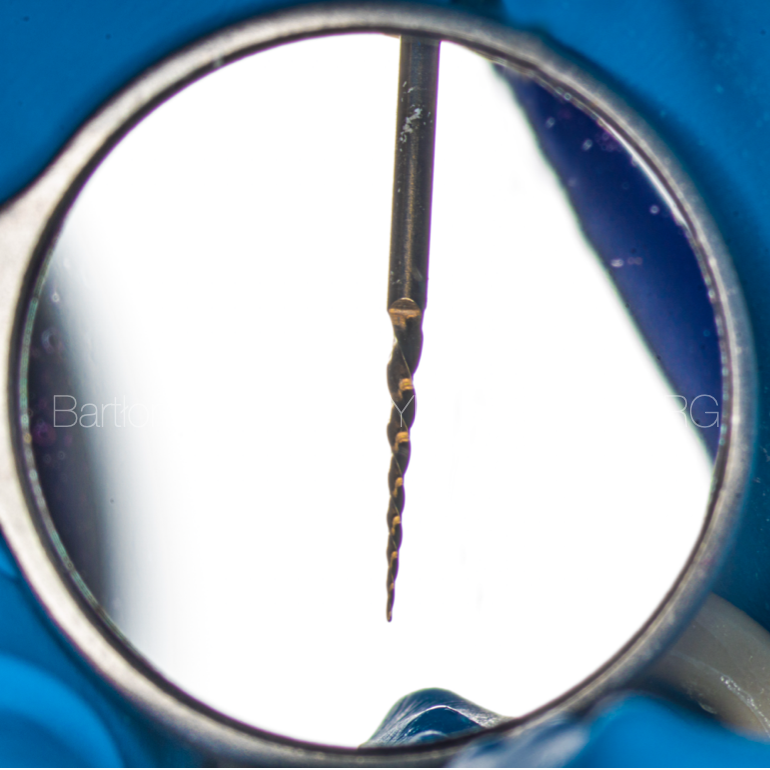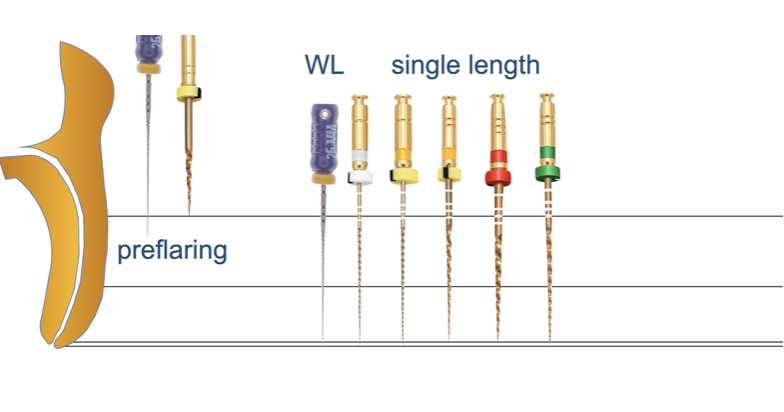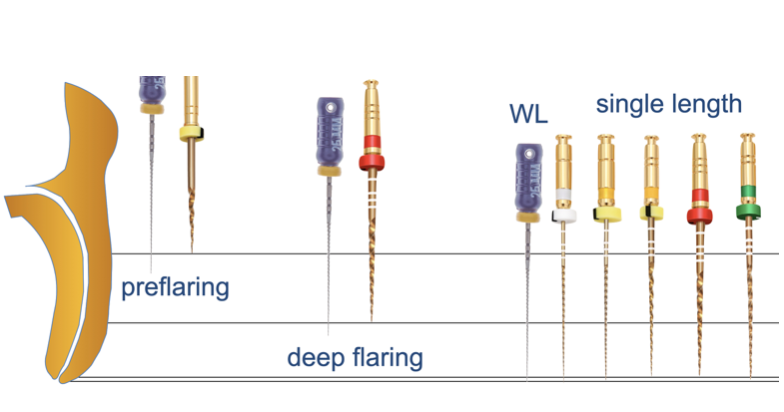
Hybrid shaping concept with MG3 rotary system
20/12/2021
Warning: Undefined variable $post in /var/www/vhosts/styleitaliano-endodontics.org/endodontics.styleitaliano.org/wp-content/plugins/oxygen/component-framework/components/classes/code-block.class.php(133) : eval()'d code on line 2
Warning: Attempt to read property "ID" on null in /var/www/vhosts/styleitaliano-endodontics.org/endodontics.styleitaliano.org/wp-content/plugins/oxygen/component-framework/components/classes/code-block.class.php(133) : eval()'d code on line 2
Mostly in the molar teeth crown down technique is the most effective one in the terms of the root canal debridement. However in simplier cases combination of crown-down, rotary glide path and single length can be also very effective. This technique can be called a hybrid technique and will be described in this article.
Crown-down shaping technique has been introduced many years ago for the rotary NiTi files. Files like Profile, K3 or Hero642 were used in that kind of technique. It has become popular in the 90’s however for the majority of clinicians it remain quite complicated. For that purpose systems like ProTaper universal and Mtwo were designed. While launching those kind of files the paradigm of the crown-down technique was shifted into the single length and for big amount of dentists the technique become much more clear and easy to use. On the other hand unfortunately single lenght technique is very sensitive for some clinical problems for example the working length determination. This is because the working length determination is the first setp that has to be performed with the hand files. In more curved canals the WL check needs to be performed after every Ni-Ti file, because it can shorten from 0.5 to 0.7mm. This happens because in more curved canals reaching the WL with every NiTi file makes the curvature slightly less curved so the final length of the canal can be shorter. This issue of the WL determination will cause the over preparation of the apical constriction and over filling of the canal.

Fig. 1
How to manage canals in the molar teeth in an easy way?
First of all we need to perform the preflaring stage with the „starter” file. We should reach aprox. 1/3 of the root canal length. Usually no more than 5mm. This will reduce the canal curvature, allow you to reach the apical area easier. Also the lenght of the canal should not reduce during the shaping procedure. After this procedure in straight canals we can establish the working length with the hand files and use G1 (20.04) and G2 (25.06) file for shaping procedure. In larger canals we can use the the G3 (35.04) file. Files G1, G2, G3 can be used in a single length technique. Mostly in canals with curvature smaller than 30 degree this technique will allow you to work in a simple and efficient way.

Fig. 2
For more curved canals you can also use the hybrid technique which I like the most in molar cases. In this case after the Starter file you need to establish the glide path and the WL (or temporary working length). After this procedure you need tu use the G2 file and reach 1/2-2/3 of the WL - you can call this step a „deep flaring”. Than you should rinse the canal and establish the WL one more time. This stage in curved canals is mandatory. Also rotary glide path with files P1 and P2 can be useful. After this procedure you can use G1, G2 and G3 (if needed) in the single length technique.
Hybrid Shaping Techniqe in action. (video)
- Preflaring with Starter File
- WL
- Deep Flaring with G2 file
- Rotary Glide Path with P1 and P2
- Single Length Shaping with G1, G2, G3
Conclusions
The crown-down technique is considered as the most efficient in the terms of debridement of the root canal space. However as a quite difficult technique many clinicians prefer to use single length technique. Because of the issue with WL determination in the curved canals, as in many molar teeth, the single length should be modified. In canals with small curvature (aprox. 30degree) the preflaring should be performed. In more curved canals also deep flaring procedure is very useful for preserving the apical constriction and avoiding procedural problems.
Bibliography
1. Tortini D, Colombo M, Gagliani M. Apical crown technique to model canal roots. A review of the literature. Minerva Stomatol. 2007 Sep;56(9):445-59. English, Italian. PMID: 17938624.
2. Vanni JR, Santos R, Limongi O, Guerisoli DM, Capelli A, Pécora JD. Influence of cervical preflaring on determination of apical file size in maxillary molars: SEM analysis. Braz Dent J. 2005;16(3):181-6. doi: 10.1590/s0103-64402005000300002. Epub 2006 Jan 12. PMID: 16429181.
3. Hamze, Faeze et al. “Comparison of two canal preparation techniques using mtwo rotary instruments.” Iranian endodontic journal vol. 6,4 (2011): 150-4.
4. Schäfer E, Erler M, Dammaschke T. Comparative study on the shaping ability and cleaning efficiency of rotary Mtwo instruments. Part 1. Shaping ability in simulated curved canals. Int Endod J. 2006 Mar;39(3):196-202. doi: 10.1111/j.1365-2591.2006.01074.x. PMID: 16507073.
